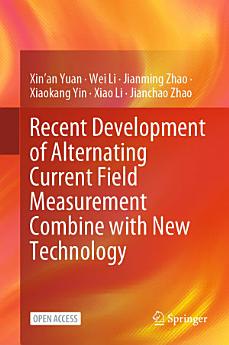Recent Development of Alternating Current Field Measurement Combine with New Technology
About this ebook
About the author
Xin’an Yuan was born in Nanyang, China, on March 12,1990. He received the B.E., M.E., and Ph.D. degrees in mechanical design manufacture and automation from the China University of Petroleum (East China), Qingdao, China, in 2013,2016, and 2019, respectively. Following graduation, he joined the China University of Petroleum (East China), where he is currently an Associate Professor with the Research Institute of Center for Offshore Engineering and Safety Technology. His research interests include nondestructive testing, signal processing, and deep learning.
Wei Li (Member, IEEE) received the Ph.D. degree in mechanical and electronics engineering from the China University of Petroleum (East China), Qingdao, China, in 2007. Following graduation, he joined the China University of Petroleum (East China), where he is currently a Professor of mechanical and electronics engineering. His current research interests include electromagnetic nondestructive evaluation and signal processing, offshore engineering structure design and finite-element method analysis, and pipeline safety and reliability assessment.
Jianming Zhao received the Ph.D. degree in mechanical engineering in 2023 from the China University of Petroleum (East China), Qingdao, China. His research interests include signal processing, inversion imaging, and deep learning.
Xiaokang Yin (Senior Member, IEEE) received the B.E. degree in information engineering from the East China University of Science and Technology, Shanghai, China, in 2005, and the M.S. degree in advanced electronic engineering and the Ph.D. degree in engineering from the University of Warwick, Coventry, U.K., in 2007 and 2011, respectively. In 2011, he joined the China University of Petroleum (East China), Qingdao, China, where he is currently a Professor of mechanical and electronic engineering.
Xiao Li received the Ph.D. degree in mechanical engineering from the Dalian University of Technology, Dalian, China, in 2019. He is currently a Associate Professor with the China University of Petroleum (East China), Qingdao,China. His research interests include machine vision and contouring detection for machine tools. Jianchao Zhao received the B.E. degree from the China University of Petroleum (East China), Qingdao, China, in 2019, where he is currently pursuing the Ph.D. degree.,His research interests include model analysis.




